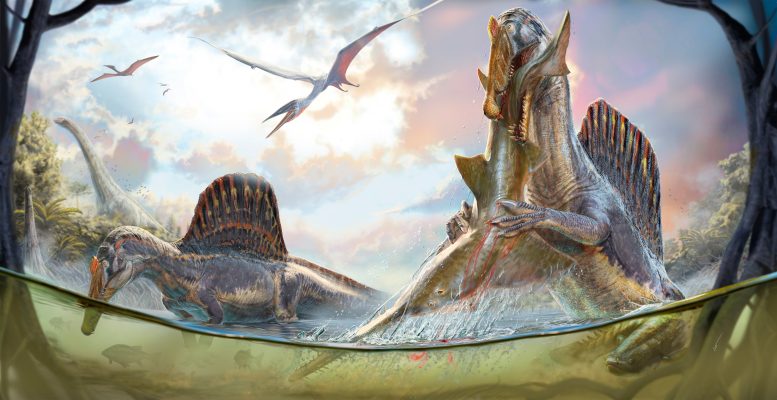
Doing what they do better than any animal that ever evolved, a pair of the giant sail-backed predators, Spinosaurus aegyptiacus, wade into nearshore waters for prey as pterosaurs soar overhead some 95 million years ago on the northern coast of Africa. Credit: Daniel Navarro
Research conducted by UChicago paleontologists and their partners reveals significant flaws in previous theories suggesting that the sail-backed giant predator Spinosaurus actively hunted its prey underwater.
For years, controversy has swirled around how a Cretaceous-era, sail-backed dinosaur—the giant Spinosaurus aegyptiacus—hunted its prey. Spinosaurus was among the largest predators ever to prowl the Earth and one of the most adapted to water, but was it an aquatic denizen of the seas, diving deep to chase down its meals, or a semiaquatic wader that snatched prey from the shallows close to shore?
A new analysis led by paleontologists from the University of Chicago reexamines the density of its bones as a way of determining its life habits in water.
Deep water swimmer or shoreline predator?
When detailed descriptions of a nearly complete specimen of Spinosaurus were first published in Science in 2014, a UChicago-led research team pitched it as a shoreline stalking or surface swimming demon, not a fully aquatic underwater predator (read more about the history of Spinosaurus and its initial discovery). Later in 2020, an international group of researchers countered that description with a study in Nature, using its newly discovered, tall-spined tail bones to suggest that it propelled itself like an eel to hunt underwater.
A 2022 Nature study by many of those same authors confirmed their 2020 assessment showing that Spinosaurus had dense bones to use as ballast in diving like a penguin. They also argued that some other spinosaurids, such as its older African cousin Suchomimus, had less dense bones and were likely waders.
About the same time in 2022, a group of paleontologists at UChicago teamed up with colleagues elsewhere to test these ideas by creating digital skeletons and flesh models of the Spinosaurus and Suchomimus. Their results, published in eLife, found that both species would have been unstable when swimming at the surface and far too buoyant to dive and fully submerge.
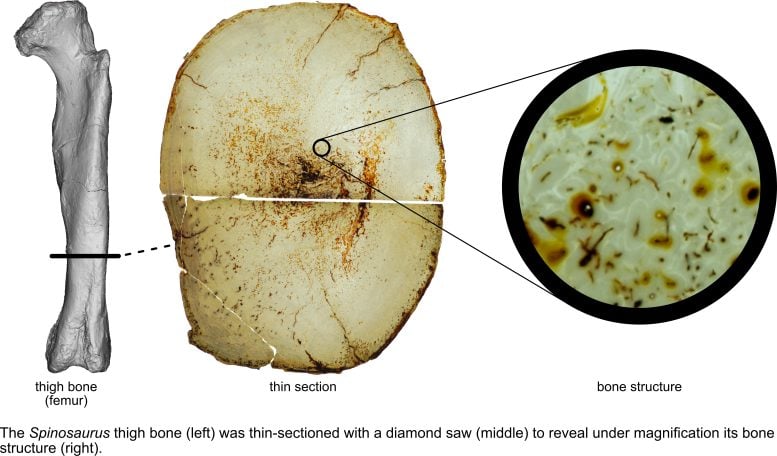
The Spinosaurus thigh bone (left) was thin sectioned with a diamond saw (middle) to reveal under magnification its bone structure (right). Credit: Stephanie Baumgart and Evan Saitta
Now that same team has taken on the question of bone density, led by senior author Paul Sereno, PhD, from UChicago and first author Nathan Myhrvold, PhD, Founder and CEO of Intellectual Ventures. Their study, “Diving dinosaurs? Caveats on the use of bone compactness and pFDA for inferring lifestyle,” was recently published in the journal PLOS ONE.
“We had made the thin sections of these species that were used for bone density calculations, and so we thought we would start by trying to replicate their measurements,” said Sereno, who is a Professor of Organismal Biology and Anatomy at UChicago and co-led the initial discovery of the new Spinosaurus specimen in 2014. “But we encountered many factors that generated a range of values—enough to undermine the conclusions.”
New calculations for ancient fossils
The team began by asking new questions about bone density, such as how to digitize thin sections, where to slice through the thigh and rib bones, and whether to include bones from more than one individual.
Some modern aquatic mammals like manatees have swollen, dense bones to help them stay underwater, like a scuba diver’s weight belt. Large land animals, like elephants and dinosaurs, also have dense bones to support their increased body mass. Most modern birds and many dinosaurs including Spinosaurus have the opposite condition, with air sacs attached to lungs or inside bones that act like a life vest preventing submergence. Assessing the aquatic abilities of an extinct species like Spinosaurus needs to take account of all these factors.
Given the complexity of understanding the meaning of bone density, Sereno and team worked with Myhrvold to reevaluate how the statistical technique used in the 2022 Nature study was applied to support the claim that Spinosaurus was a deep diver. The approach, known as phylogenetic flexible discriminant analysis (pFDA), is like machine learning: the pFDA technique trains a classification algorithm on a group of species whose lifestyle is well understood.
In principle, researchers could then use the algorithm to estimate the likelihood that a poorly understood species such as Spinosaurus falls into one behavioral group or another. In practice, however, Myhrvold said there are problems that must be overcome.
“Unfortunately, that technique does not work properly unless you have lots of data, you make apples-to-apples comparisons, and you check that the data meet certain statistical prerequisites,” he said. “None of those requirements were met in that earlier study, so the results just didn’t hold up under reexamination.”
The new paper should help paleontologists understand the pitfalls of pFDA and other kinds of broad statistical analyses and how to avoid them. The researchers show that it is important to use consistent and objective criteria to decide which species to include and exclude, as well as how to classify their behavior. The findings also demonstrate the importance of taking measurement errors and individual variations into account when assessing bone density.
“We think Spinosaurus, one of the largest predatory animals ever to have evolved, needed extra bone strength to support its weight on its relatively short hind limbs,” Sereno said. “Spinosaurus was able to wade into waterways more than six feet deep without floating, where it could ambush fish of any size with its claws and jaws—but all while keeping its toes firmly anchored in the mud.”
Reference: “Diving dinosaurs? Caveats on the use of bone compactness and pFDA for inferring lifestyle” by Nathan P. Myhrvold, Stephanie L. Baumgart, Daniel Vidal, Frank E. Fish, Donald M. Henderson, Evan T. Saitta and Paul C. Sereno, 6 March 2024, PLOS ONE.
DOI: 10.1371/journal.pone.0298957
Additional authors on the study include Stephanie L. Baumgart from the University of Florida; Daniel Vidal and Evan T. Saitta from UChicago; Frank E. Fish from West Chester University in Pennsylvania; and Donald M. Henderson from the Royal Tyrrell Museum of Paleontology, Alberta, Canada.

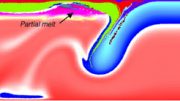
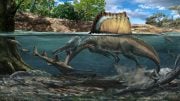




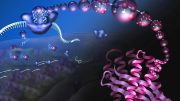

Clearly spinosaurus prey on the very aquatic web toe dinosaur pterosaur that lead to water business crocodilian not really adopt well to eat fish they grow slower and some species can not survive on it alone false gharial it is well design fish hunter better than many crocodilian it’s longostrine crocodilian .spinosaurus clearly is swimming hunter better than baryonyx when come to that .why not talk about eyes on top of the skull in spinosaurus which clearly show it was swimmer just like today gator not as extreme as today dinosaur the modern crocodilian
Spinosauridae is transition dinosaur turn into modern crocodilian it has most of the feature it’s a mesoeucrocodylia it was no controversy if they were aquatic big skull no very curve ziphodont teeth all tetanuran dinosaur had ziphodont teeth because they were land animal that why early pterosaur has serrated teeth .clearly spinosaurus is not as aquatic like too famous modern crocodilian gator Nile crocodile these have same scientific name snout a small snout in crocodile standard less aquatic snout but more aquatic because they lack fuse nasal a land feature design to hunt animal with legs no fish defendsive weapon
Spinosauridae is longostrine mesoeucrocodylia clear aquatic feature but skull was like today land mesoeucrocodylia dwarf caiman same scientific name a clear land feature the skull was not that flat land mammal like dinosaur like t.rex like .baryonyx lack fuse nasal like Nile crocodile it is found in won of dwarf caiman spinosaurus long snout is primitive nature of been the first mesoeucrocodylia
Spinosaurus has whale nose a clear aquatic feature only crocodilian today has those nose Is mugger crocodile they cliam it is not found in today crocodilian it is not true in fossil mesoeucrocodylia the nose usual goes forward even semi aquatic were nose are on top of the skull this is very rare in mesoeucrocodylia .the land mesoeucrocodylia nose are not on top of skull it’s like most tetanuran dinosaur like t.rex land mammal the nose allways forward .baryonyx did not have eyes top of the skull that why has carnotaurus horn over the eye spinosaurus could not have those 2 horns because eyes are on top of skull
Theropod horns is same horn in spectacled caiman not the lynx horn that the fake horns they are 4 horns the flat skull horn is real dinosaur horn they say Nile crocodile Siamese crocodile Cuban crocodile is like dinosaur horn and it’s link but these horn are not over eyes or near eye it’s were ears are but spectacled caiman is dinosaur horn the lynx caiman horn is fake because dinosaur do not flat skull or eyes on top of skull this is new evolution in modern crocodilian the flat skull horn is real horn the dinosaur horn
Baryonyx lack space teeth it’s simular to other tetanuran dinosaur. less curve finely serrated not so serrated clearly this animal is aquatic allso has whale nose like pterosaur but more simular to modern crocodilian than spinosaurus which is much more Whaley .spinosaurus teeth is space it has Nile crocodile teeth but has primitive teeth at the back like early gator type mesoeucrocodylia this should end cliam that spinosaurus only eat fish clearly Nile crocodile teeth are design to kill big mammal
Baryonyx spinosaurus nose are behind the kink the modern crocodilian is in front of the kink clearly baryonyx and spinosaurus are very Whaley these are aquatic feature but spinosaurus nose is not on top of the skull like crocodilian gator nose are clearly aquatic feature
The very Whaley today spinosauridae mugger crocodile is a well known land hunter it’s in semi aquatic group so nose go backward does not mean very aquatic probaly mean bite force crocodilian seem to have stresss on the snout clearly by us gator it has primitive nose like dinosaur clearly us gator is advance the Nile crocodile there ancestor has mammal nose a warmblooded nose
The early gator type mesoeucrocodylia were longostrine skull like spinosauridae most of them have mammal nose only one I saw had fuse nose and nose were not on top of skull and think this was land mesoeucrocodylia the femur were like coelophysis and gator .fuse nose is rare in gator type mesoeucrocodylia the mammal nose was before eusuchian .mammal nose is feature of eusuchian but Chinese gator us gator it is fuse the other gator caiman it is not fuse
In baryonyx and spinosaurus the nose is reduce when compare to other tetanuran dinosaur extreme in spinosaurus they can not smell very well modern crocodilian the best in dinosaur not as high as fossil land mesoeucrocodylia .there is lot of stress in spinosaurus skull another primitive feature they lack back up the champ dinosaur has back up the gator .the thin snout clearly aquatic feature the gator has 6 bone fuse to braincase like mammal much more stronger skull the backup
Spinosauridae only has strong long skull they will have trouble if the skull is short .longostrine early mesoeucrocodylia is the most primitive gator type mesoeucrocodylia they have prearticular bone that you can find in dinosaur they were never any primitive feature in modern crocodilian .in early land gator type mesoeucrocodylia they have one only with 4 bone fuse to braincase they allso have some fuse nose like dinosaur lizard tuatara .because spinosauridae is early mesoeucrocodylia the pressure push the nose backward no backup less diverse
Spinosaurus teeth count is like land animal baryonyx like the gharial but clearly baryonyx is design to kill big land animal it has death roll system because spinosaurus has fuse nasal extreme land feature it still show aquatic feature like the tail eyes and teeth clearly it was aquatic hunter but not like Nile crocodle us gator
Early gator type mesoeucrocodylia has salt glands not link today mesoeucrocodylia they allso has gharial and false gharial big temporal fenestra very fish eating feature because spinosauridae was a strong aquatic they keep getting better at aquatic they were too early in the aquatic game they look what was expecting from science the evolution game
There is no evidence for air sac in dinosaur the evidence said it had crocodilian breathing system and was impossible to have a bird air sac . modern crocodilian has hollow bone beyond the skull but it is not pneumatic a bird and dinosaur feature.the hollow bone beyond the skull is a mostly eusuchian feature in mesoeucrocodylia only know one none eusuchian mesoeucrocodylia with holllow bone beyond the skull
I do not know what in the hollow bone of today spinosauridae the none skull bone.i guest that why gator hollow bone is close no life vess the gator bone beyond the skull.i herd spinosaurus lack hollow bone beyond the skull like early mesoeucrocodylia .baryonyx do have the normal hole the pneumatic hollow bone in tetanuran dinosaur .way not show whole fact i did not read links.probaly there is pneumatic hollow bone in gator type mesoeucrocodylia beyond the skull
Way why?
There is 23 to 27 species modern crocodilian usual only test us gator Nile crocodile because some are endanger .since it’s early. baryonyx likely had simular lifestyle like the gator close to it but spinosaurus was more land base because extreme land feature fuse nasal clearly it was aquatic with eyes on stop of skull and poor ziphodont teeth worst than baryonyx
Reason why baryonyx is close to us gator lifestyle like how dinosaur is warmblooded without a warmblooded nose that found in most modern crocodilian and mammal by the proformance of the tibia bigger than the femur found in compsognathus a fast feature found in high end mammal and mesoeucrocodylia macelognathus